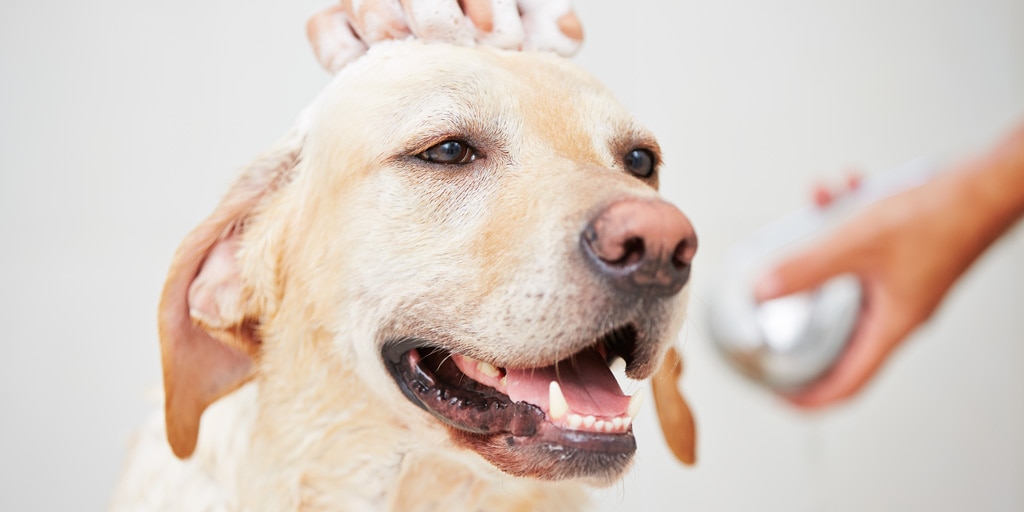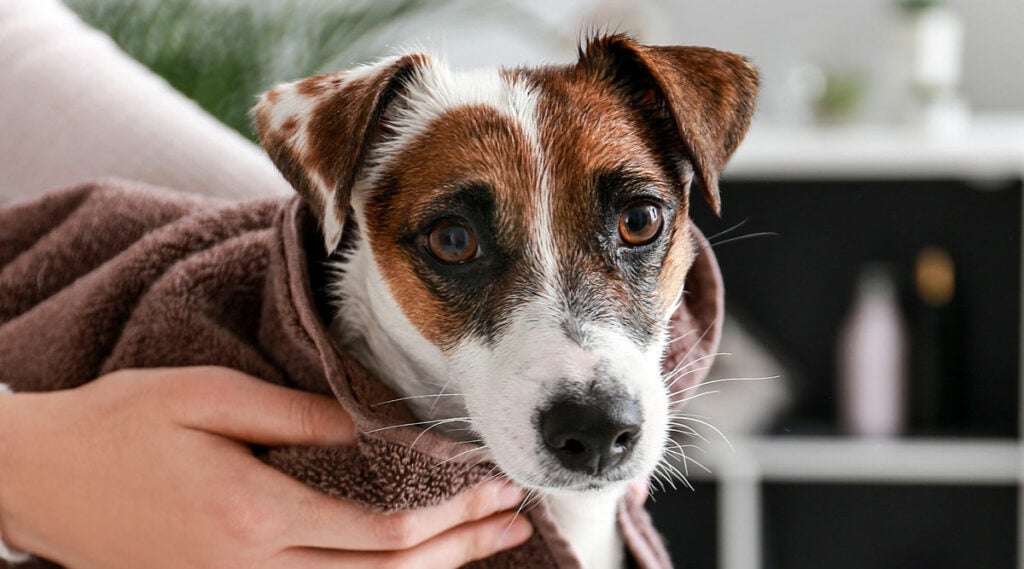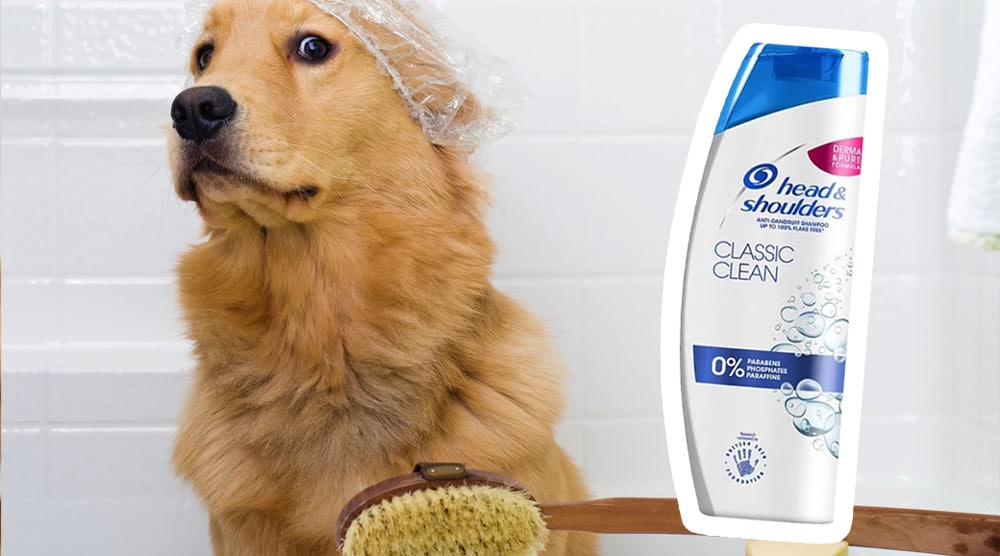Quick Takeaways
- As a general rule, short-haired dogs should be bathed every 6-8 weeks. Some dogs may need baths even less frequently than this.
- However, many factors affect how often you should bathe a short-haired dog, including their fur type, activities, and health.
- You will need to give your dog a one-off bath if they’ve rolled in something smelly or their coat is starting to smell unpleasant.
- Bathing too frequently can strip healthy oils from the coat, leading to dryness, itching, and an increased risk of bacterial infection.
- Between baths, it’s vital to maintain your dog’s coat health with regular brushing.
Short-haired dogs generally don’t need bathing as frequently as those with longer coats, as their hair is less likely to matt and holds less dirt. The occasional bath is still important for cleaning their fur and maintaining coat health though.
In this article, we’ll discuss how often you should bathe a short-haired dog. We’ll also go through some reasons dogs need more frequent baths and some tips for making baths less stressful for your pet.
Contents
How Often Should You Bathe a Dog With Short Hair?
The short answer is that you should bathe your short-haired dog every six to eight weeks. Of course, your dog may also need an extra bath when they roll in something messy or if they begin to smell unpleasant.
This is just a general rule though. Some dogs can go much longer than this between baths, depending on their activity levels, fur type, and other factors. Certain medical conditions also mean that the dog needs to be bathed more frequently with a medicated shampoo.
Note: You should only use specialist dog shampoo and conditioner when bathing your dog. Human shampoo or other alternatives, such as washing up liquid, can irritate a dog’s skin, eyes, and nose.
Why It’s Important to Avoid Overbathing

It’s important not to bathe your dog too often, as washing strips a dog’s coat of its natural oils. This damages the skin, hair follicles, and fur, and can make your dog more susceptible to fungal and bacterial infections. It also dries out the skin, which can cause flaking and itching.
Additionally, topical flea treatments require your dog’s natural oils to spread properly, so frequent bathing can make treatments less effective.
There are exceptions, such as dogs with skin conditions that need medicated shampoos. However, for most healthy short-haired dogs, it’s better to bathe less frequently than risk overbathing.
What Can Affect Bathing Frequency?

Fur Type
Short-haired dogs with soft and oily coats, like the Basset Hound, generally need bathing more frequently than dogs with hard and dry coats, like the Greyhound. However, be careful not to bathe oily-coated breeds too often and risk stripping the coat of its natural oils.
Dogs with short double coats, like the Labrador Retriever, are also susceptible to overbathing. Their coats are designed for insulation, so washing frequently can remove too much oil.
If your short-haired dog is a seasonal shedder, you may be tempted to bathe them more frequently during shedding season to remove excess fur, but this isn’t necessary. Instead, brush your dog frequently between baths, and use de-shedding products like de-shedding spray or slicker brushes.
Activities & Lifestyle
It sounds obvious, but active dogs who spend lots of time outdoors need more frequent bathing. If your dog spends a lot of time in a muddy back garden, they may also get dirtier than an apartment dog.
Your dog’s favorite activities also affect bathing frequency. Unless your dog gets into something sticky or smelly, they probably don’t need a bath after a trip to the dog park or a hike. Using a brush to remove debris and a damp washcloth to clean anything stuck to fur and paws is usually all that’s required.
On the other hand, if your dog spends a lot of time swimming in dirty water, running through mud, or out in the field with livestock, they’ll need more frequent baths.
“Although many dogs love splashing through puddles or jumping in lakes, it is quite rare to meet those that enjoy baths,” says Rebecca Morello, IMDT dog trainer. “This is likely because we take away their choice, ask them to balance on slippery surfaces, and get bubbles in their eyes!”
Tip: It’s also important to make sure your dog doesn’t get too cold during or after a bath. Read our guide to why dogs shiver after a bath.
Health
While healthy short-haired dogs only need to be bathed every 6-8 weeks (or longer), dogs with certain medical conditions may need more frequent bathing. If your vet prescribes a medicated shampoo for a skin condition, such as atopic dermatitis, they should advise you on how frequently to bathe your dog with it.
Additionally, adult dogs with bladder and bowel control issues (and puppies still working on house training) should be washed immediately after an accident. However, as a full bath can be quite a negative experience for a dog, cleaning them with a warm, damp cloth is often enough.
Even if your dog doesn’t have a medical condition, pay attention to their skin and fur health. If it seems dull or dry, you may be bathing your dog too frequently.
How to Make Bath Time More Enjoyable for a Short-Haired Dog

While it’s important to avoid overbathing, most dogs need an occasional bath to maintain a clean coat. As compassionate owners, it’s our job to make these baths as stress-free as possible for our dogs, rather than just rushing to get them over with.
“We often think about doggie baths as a one-time activity, but they actually involve many steps,” says Rebecca Morello. “The key is to minimize the stress during each step.”
Here are some examples, but you’ll need to consider your own dog’s likes and dislikes to see which apply:
- Getting into and out of the bath. Many dogs don’t like being lifted into a bath, so be gentle during this step. Similarly, ensure they are fully supported when they get out to avoid injury.
- Balance in the bath. A non-slip mat often helps the dog to feel more secure, which makes baths much more enjoyable.
- Water temperature. Check you could comfortably sit in the water without being too cold or hot, as dogs have difficulty cooling down or warming up a bath.
- Rinsing technique. Using a jug instead of a shower head can give you more control and make it less likely that you accidentally splash your dog in the face.
- Lathering technique. Be gentle – like you would be when washing yourself! Rough handling is distressing for a dog, who cannot choose to move away when in a bath.
- Shampoo. Always use a dog-specific shampoo, as human shampoos can cause dryness and irritation. “I like to use minimally scented or scentless shampoos to avoid irritating a dog’s sensitive sense of smell,” adds Morello.
- Drying. Place towels on the floor so your dog can rub their fur dry. Of course, you can help out with a soft towel too!
Summary
Fur length is just one factor when deciding how frequently your short-haired dog needs to be bathed. Others include your dog’s coat type, activity level, and health.
You’ll need to consider all of these factors when determining how often to bathe your dog. But for most short-haired dogs, bathing every six and eight weeks is usually enough.
Do you have any questions about how often you should bathe a short-haired dog? Please let us know in the comment section below. You may also want to read our article about whether you can use Head and Shoulders on a dog.




